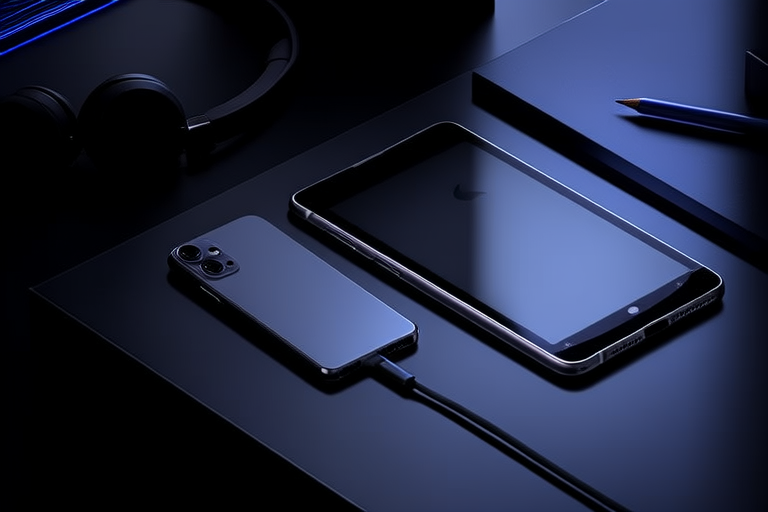From Phone to Tablet: Exploring the Versatility of Modern Smart Devices
Introduction
The journey from simple mobile phones to sophisticated smart devices has been nothing short of remarkable. Over the past few decades, smartphones and tablets have evolved into indispensable tools that shape every aspect of our daily lives. These devices have revolutionized communication, entertainment, work, and learning, making them essential companions for people around the globe. This article delves into the evolution of smart devices, examining the advancements in both smartphones and tablets, their unique features, and the ways they cater to various use cases. Additionally, we’ll explore the emerging trend of hybrid devices and speculate on the future of smart technology.
The Evolution of Smartphones
Smartphones have come a long way since the launch of the first iPhone in 2007. Initially, these devices were primarily used for making calls and sending text messages. However, rapid advancements in hardware and software have transformed them into powerful computing devices. Today’s smartphones boast high-performance processors, advanced camera systems, and vibrant displays, enabling users to perform a wide range of tasks. For instance, the introduction of AI-driven features has improved photo editing, voice recognition, and personal assistants. Moreover, smartphones now integrate a plethora of sensors, such as accelerometers, gyroscopes, and proximity sensors, enhancing user experience and functionality.
Key milestones in the smartphone industry include the release of the first Android device, the HTC Dream, in 2008, which brought open-source operating system options to the market. The launch of the Samsung Galaxy S series in 2010 further popularized Android and introduced innovative features like AMOLED displays and expandable storage. In recent years, manufacturers have focused on improving battery life, expanding memory capacity, and integrating 5G connectivity. These advancements have significantly enhanced the performance and usability of smartphones, making them more versatile and indispensable in everyday life.
The Rise of Tablets
Tablets emerged as a distinct category of smart devices, offering unique features that set them apart from smartphones. With larger screens ranging from 7 inches to 12 inches, tablets provide an immersive viewing experience, making them ideal for consuming media, browsing the web, and reading eBooks. The larger screen size also facilitates multitasking, allowing users to run multiple apps simultaneously. For example, users can watch a video while taking notes or browsing the internet while playing a game. Additionally, tablets offer specialized applications for productivity, entertainment, and education, catering to the diverse needs of users.
One of the most significant advantages of tablets is their portability and ease of use. Unlike laptops, tablets do not require external accessories such as keyboards and mice. Instead, they feature intuitive touch interfaces and stylus support, enabling users to write, draw, and sketch effortlessly. This makes tablets particularly popular among artists, designers, and students. Furthermore, tablets are lightweight and compact, making them easy to carry around, whether for work or leisure. As a result, tablets have become a go-to device for professionals, students, and casual users alike.
Versatility of Smart Devices
Both smartphones and tablets offer unique benefits, but their suitability depends on the specific use case. Smartphones excel in mobility, making them ideal for quick tasks such as checking emails, browsing social media, and making phone calls. Their compact size and always-on connectivity make them perfect for on-the-go activities. For instance, commuters can easily check their schedules, send messages, or listen to podcasts during their daily commute. Additionally, smartphones are equipped with advanced camera systems, making them excellent for capturing photos and videos.
On the other hand, tablets shine in scenarios that require a larger screen and more immersive experience. They are particularly suited for consuming media, such as watching movies, playing games, or reading books. The larger screen size provides a more engaging and enjoyable experience, especially when paired with high-quality speakers or headphones. Tablets are also excellent for productivity tasks, such as drafting documents, creating presentations, or managing spreadsheets. Many professionals prefer tablets for their ability to multitask and run specialized applications for creative tasks like drawing or music production.
For example, graphic designers often use tablets with styluses to create detailed illustrations and designs. Musicians can utilize tablet-based DAWs (digital audio workstations) to compose and produce music. Additionally, educators can leverage tablets to deliver interactive lessons and engage students in hands-on learning experiences. Overall, the versatility of smartphones and tablets allows users to choose the device that best suits their needs, whether it’s for convenience, productivity, or creativity.
Hybrid Devices and Future Trends
The convergence of smartphones and tablets has given rise to hybrid devices that blur the lines between traditional categories. Foldable phones, such as the Samsung Galaxy Z Flip and Z Fold, offer the flexibility of a smartphone with the expanded display of a tablet. These devices can be folded to fit comfortably in pockets while unfolded to provide a larger screen for multitasking and media consumption. Similarly, tablet-laptop hybrids, like Microsoft Surface Pro and Apple iPad Pro, combine the portability of a tablet with the productivity features of a laptop. Users can attach external keyboards and styluses to these devices, transforming them into powerful computing tools.
Looking ahead, the future of smart devices is likely to be characterized by continued innovation in form factors, materials, and integration with other technologies. One exciting trend is the development of flexible and rollable displays, which could enable even more compact and versatile devices. Additionally, advancements in augmented reality (AR) and virtual reality (VR) technologies may lead to new forms of interaction and immersion. For instance, AR glasses could provide real-time information and enhance productivity, while VR headsets could offer immersive entertainment and educational experiences. Furthermore, the integration of smart devices with the Internet of Things (IoT) could create seamless ecosystems, where devices communicate and collaborate to improve efficiency and convenience.
Conclusion
In conclusion, smartphones and tablets have become integral parts of our digital lives, offering a wide range of functionalities and use cases. From mobile communication to creative tasks, these versatile devices have transformed the way we interact with technology. The evolution of smart devices, from simple phones to advanced tablets and hybrid devices, showcases the incredible progress made in hardware, software, and design. As technology continues to advance, we can expect even more innovative and user-friendly devices that cater to the diverse needs of users.
The ongoing role of smart devices in shaping our digital lives underscores their importance in the modern world. Whether it’s for personal enjoyment, professional productivity, or educational purposes, these devices will continue to play a vital role in our daily routines. By staying at the forefront of technological advancements, manufacturers can ensure that smart devices remain relevant and indispensable in the years to come. As we look forward to the future, it’s clear that the evolution of smart devices will continue to shape and enrich our lives in countless ways.


